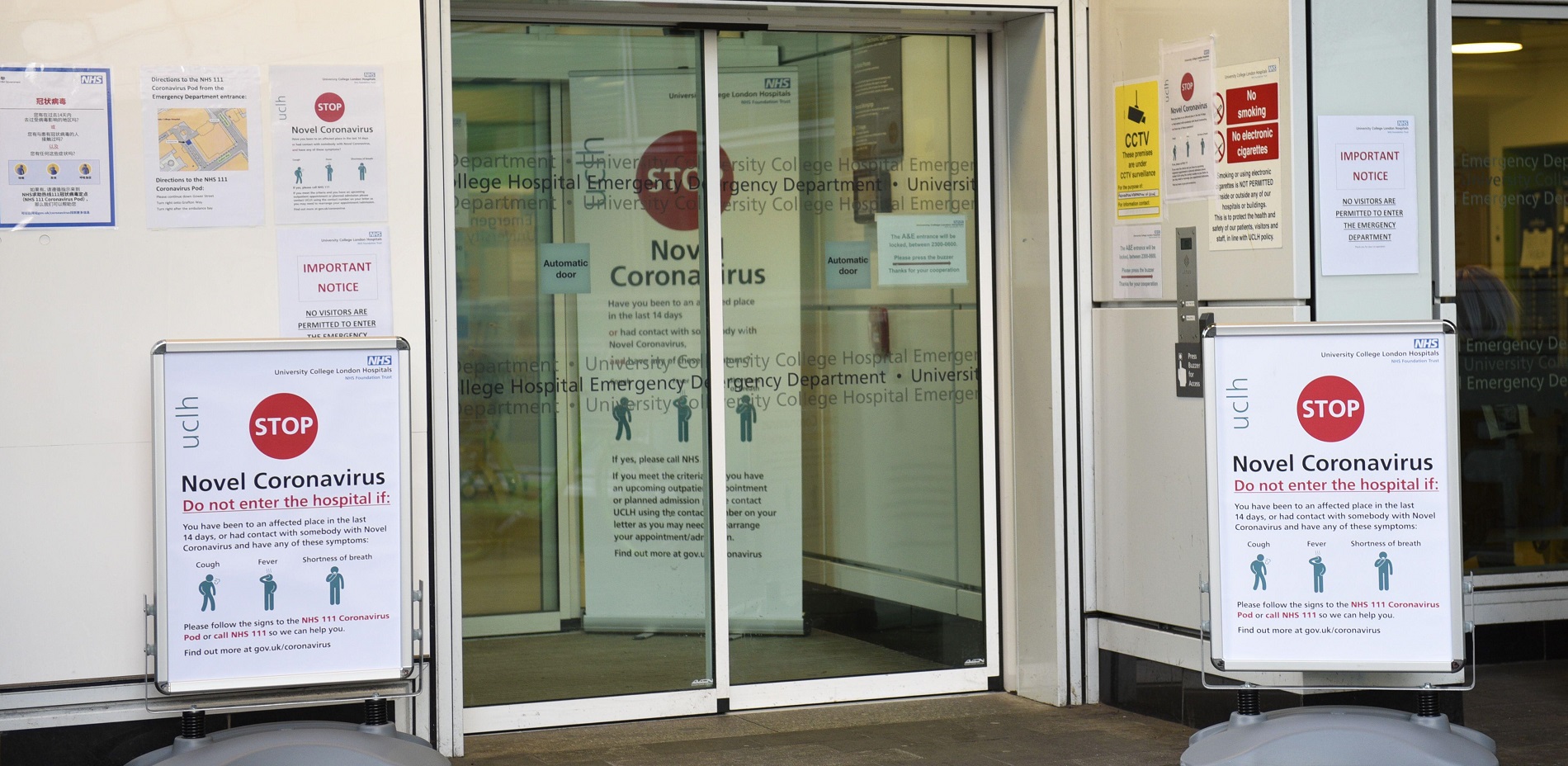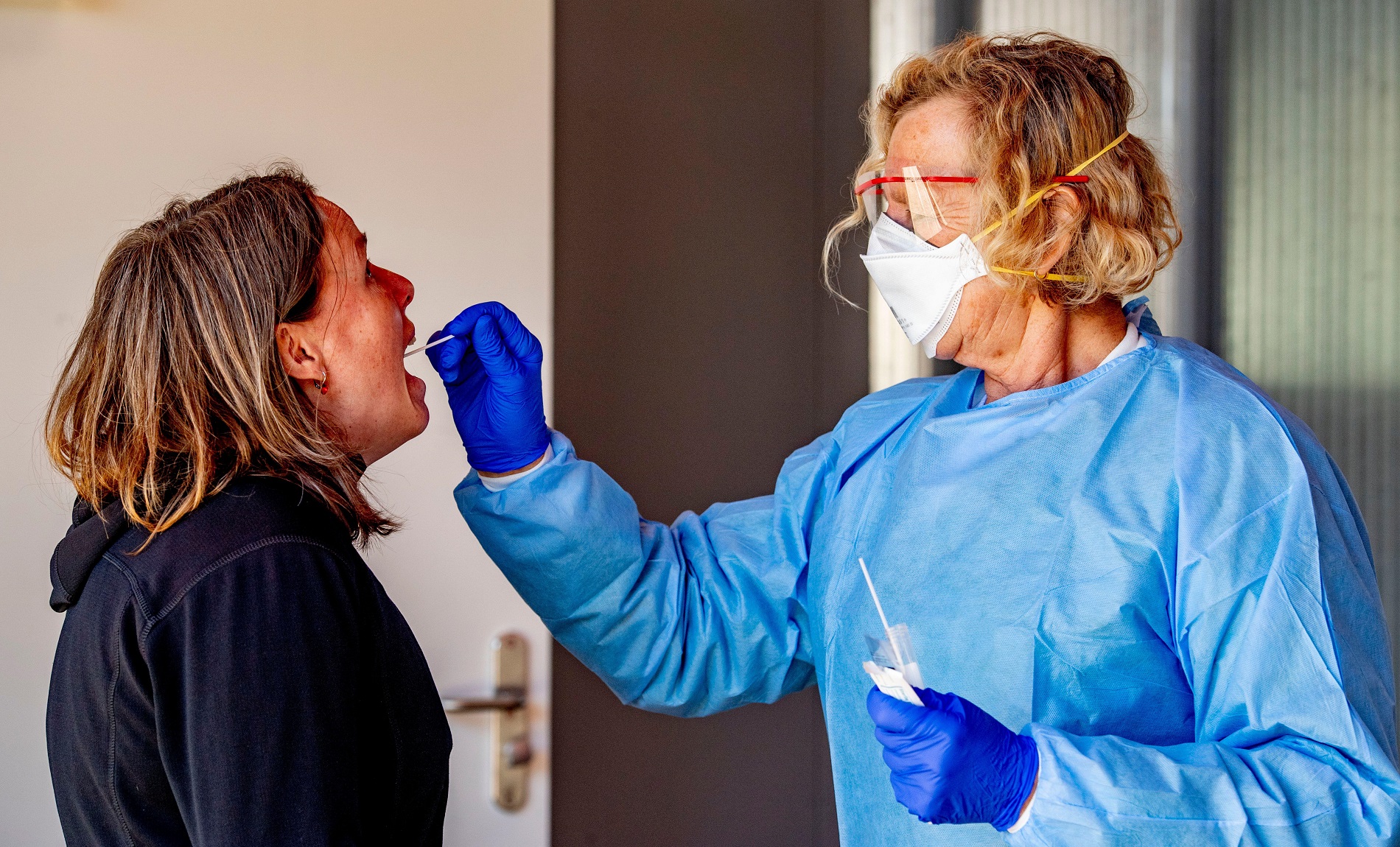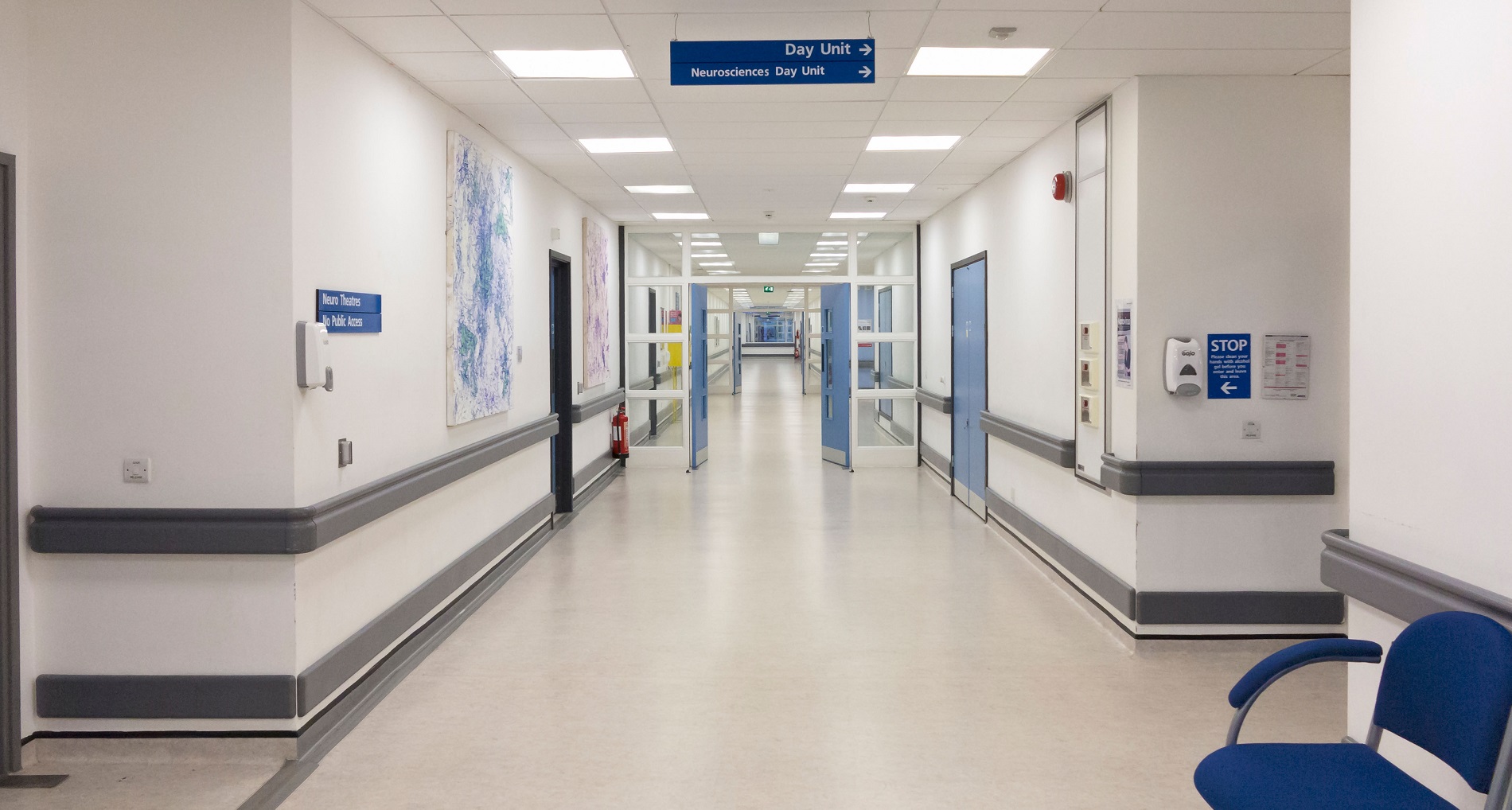The problem with coronavirus transmission in hospitals

More than 65,000 people in the UK have died from coronavirus since the pandemic hit our shores in early March. But as attention has focused on infections in care homes, schools, universities and pubs and restaurants, relatively little is still known about coronavirus transmission in hospitals.
This is partly because of the nature of the virus itself, and how long it can be until symptoms appear—if they appear at all. As a result, coronavirus transmission is classed in different ways and according to different time frames by different trusts. Getting a complete picture of transmission in hospitals during the pandemic is almost impossible. This means fact-checking claims about coronavirus transmission in hospitals is also almost impossible.
Full Fact sent Freedom of Information requests to every NHS trust in England and analysed data from 127 NHS trusts which were able to provide this information about transmission in hospitals. We’ve taken a look at what we already know about hospital-acquired Covid-19, what we may never know and what the future might hold for understanding this important issue better.
Where is the data?
Official data on hospital-acquired coronavirus (technically known as “nosocomial” infections), and the deaths resulting from those infections, is lacking. The NHS publishes some data on this, but it is not very accessible.
To find “probable” hospital infections—that is, positive tests of patients who were in hospital for more than seven days—Full Fact was advised to find the difference between sets of data on new hospital cases and new hospital cases from the community. The data suggests that, between 1 August and 26 November, there were around 10,000 nosocomial infections (approximately 16% of all coronavirus infections recorded in hospitals).
This data is also broken down by hospital, but the issue is that people who develop symptoms and then test positive eight days after admission could still have been infected before they were admitted, as symptoms can take up to 14 days to appear. This makes it very difficult to be sure that these infections are definitely hospital acquired.
In May, it was reported that NHS England estimated that 10-20% of people in hospital with coronavirus had been infected while they were inpatients.
There is no public data on how many patients who became infected in hospital subsequently died.
Reports of hospital outbreaks appear frequently in the media, but these alone don’t tell us much about hospital-acquired Covid-19: it can be very difficult to determine if the affected patients were definitely all infected in hospital, rather than being individually infected in the community before they were admitted, but only testing positive once they were in hospital.
Public Health England’s most recent Covid-19 surveillance report says that, in the week to 13 December, there were 100 acute respiratory incidents (ARI) in hospitals, 93 of which had at least one linked case that tested positive for coronavirus. ARI incidents are reported based on situations where two or more laboratory confirmed cases of respiratory infections are linked to a particular setting (such as a hospital ward) or an outbreak is suspected.

How is it counted?
The nature of the virus itself causes further problems when identifying hospital transmission. The virus can have an incubation period of several days, during which an infected person may not yet have viral levels high enough to test positive.
After infection, symptoms can take up to 14 days to appear (although the average is five to six days), while some people never develop symptoms at all. This means that an inpatient who only tests positive for Covid-19 after spending a few days in hospital could have actually become infected before they were admitted.
The NHS defines a “definite” healthcare associated infection as having illness onset or a first positive test 15 days or more after admission. Between eight and 14 days after admission is classed as “probable” healthcare associated infection, while a case with any symptoms or positive tests before eight days is classed as “indeterminate”.
A report into coronavirus transmission in hospitals from the NHS regulator Healthcare Safety Investigation Branch in October warned: “A precise understanding of nosocomial infection rates for Covid-19 remains very difficult to ascertain, as different definitions of nosocomial infection for Covid-19 are used. At the time of writing, there was no publicly available data to provide evidence of the scale of nosocomial of Covid-19 in the NHS in England.”
It also said: “The number and rate of nosocomial infections is unknown, however it is acknowledged as an issue that requires greater understanding.”
A study published in July led by King’s College London estimated that 12.5% of all Covid-19 inpatients had hospital-acquired infections. The study, which looked at 1,500 Covid patients admitted up to 28 April in 10 hospitals in the UK and one in Italy, defined nosocomial patients as those who were diagnosed 15 or more days after admission to hospital.
However, the study said this was a “conservative” estimate, as this definition did not include people who tested positive sooner, hospital workers, or asymptomatic patients who were discharged without a positive test. It said the true proportion of hospital-acquired transmission could be closer to 23%.
The study also found that patients who were infected in hospital “had no greater risk of mortality, and potentially lower risk than people admitted to hospital with Covid-19”.
Dr Ben Carter, lead author on the study and a senior lecturer in biostatistics at King’s, told Full Fact that we can “never truly know the true burden of hospital-acquired infection”.
“It’s impossible to have no transmission,” he said. “When you’ve got something that’s very contagious and very rife within the population, it’s just hard to know. There are so many factors against us. People don’t know they have got it, they can spread it for a long time, and at this stage [when the study was conducted in April] they weren’t being routinely tested. It’s just a really hard thing to determine.”
It was not until the very end of April that hospitals were told to expand coronavirus testing to all inpatients, even if they did not have Covid-19 symptoms. In mid June, it became mandatory for all staff, visitors and outpatients in hospitals in England to wear face masks. In November, regular testing of all asymptomatic patient-facing NHS staff was rolled out to all trusts in England.
Dr Claudia Paoloni, president of the Hospital Consultants and Specialists Association, told Full Fact: “We’ve always felt that the guidance has come too late. Everything has been too late. We have felt there has been a slowness to respond.”
She added: “I do think there should be a standardised approach to collecting this data. I also think this is something that should be learnt from, so we have a standardised approach to any pandemic. Because this isn’t the only pandemic we’re going to have, this is going to happen again.
“And what we should be doing is learning from this that, in the event of another pandemic or risk of pandemic, we should be testing everyone routinely when they’re coming in, and doing tests throughout their stay. Whatever it is, there should be a standardised format so you can compare numbers.”

What did trusts tell us?
Full Fact sent Freedom of Information requests to every NHS trust in England, asking for data on the number of patients who tested positive for Covid-19 having initially tested negative at admission, and the number of those who subsequently died. We received data from 127 trusts, but the different ways of classifying hospital transmission makes it impossible to create a complete picture even from these.
For example, Bolton NHS Foundation Trust stated it had 84 patients test positive after testing negative on admission up to the end of October, 29 of whom died, but these figures count only “definite” healthcare associated infections (15 days or more after admission). At the Northern Lincolnshire and Goole NHS Foundation Trust, where there were 83 cases and 16 deaths, patients who tested positive from day six after admission were included. Lancashire Teaching Hospitals NHS Foundation Trust had 174 cases of transmission and 61 subsequent deaths, but included anyone who tested positive from 24 hours after admission.
Of the 127 trusts that responded to the Freedom of Information request with figures, 17 reported 100 or more cases of hospital-acquired coronavirus. Gloucestershire Hospitals NHS Foundation Trust reported 621 cases and 181 deaths up to 30 September, but provided figures from the first day of admission. In looking only at cases from 15 days or more after admission, it had 49 positive cases and 15 deaths. Barnsley Hospital NHS Foundation Trust reported 360 cases and 59 deaths, while West Hertfordshire Hospitals NHS Trust reported 296 cases and 51 deaths as of the end of October.
Eleven trusts reported 50 or more deaths from nosocomial patients. Worcestershire Acute Hospitals NHS Trust reported that 101 of its 180 nosocomial patients (including indeterminate and probable cases) died within 30 days, while 74 of the 257 hospital acquired cases at the North West Anglia NHS Foundation Trust (based on testing positive three days after admission) also died. Berkshire Healthcare NHS Foundation Trust reported that 20 of 21 nosocomial patients died up to 3 November.
Some trusts also supplied this data broken down by site. For example, Nottingham University Hospitals Trust reported 56 hospital infections and 13 deaths on its City Campus and 92 infections and 17 deaths on its Queens Medical Centre Campus to the end of September, while within Frimley Health NHS Foundation Trust there were 43 nosocomial infections and 21 subsequent deaths reported at Frimley Park Hospital, and 52 infections and 13 deaths at Wexham Park Hospital.
However, aside from the issues of defining hospital-acquired coronavirus, there are other issues with attempting to take a complete picture from this data. Many trusts warned that they could not be sure whether the deaths of nosocomial patients were caused by Covid-19 rather than some other comorbidity or condition. Others warned that false results—both positive and negative—could impact their data. For example, Doncaster and Bassetlaw Teaching Hospitals NHS Foundation Trust reported 257 cases, but said this also included inconclusive results and said some patients may test positive before admission but then non-positive at admission, and then test positive again later.
Fifteen hospital trusts said they did not have any cases of nosocomial transmission, but Dr Carter said it was unlikely that this could truly be the case in any hospital.
“You have no idea where the cases are happening, especially when the prevalence is so high,” he said.
“I don’t think there’s any malice or anybody trying to cover anything up. I think you’ve got trusts throughout the UK trying to do the best they can in a situation where they don’t know, so they’ve mapped across things they do know to report these summaries.”

What does the future hold?
A new clinical trial using genomic data could be key to answering the difficult questions with coronavirus transmission. The trial, led by scientists at UCL, will analyse the genomic sequences in nasal and throat samples from all Covid-19 patients in participating hospitals to determine if a patient or staff member caught the virus from someone else within the same hospital. It is hoped that this will help infection control teams pinpoint outbreaks, and show hospitals where improvements are needed to reduce transmission.
The trial is being led by Professor Judith Breuer, Professor of Virology at UCL, who told Full Fact to think of sequencing as “typing the virus”. She said that if you can sequence the viral genome from one sample, you can compare it to others in the hospital and see which ones are the same and which are different.
If you think you have an outbreak on a ward but the viruses are all different then you can establish that there is no transmission between the infected patients, but something else going on. If the viruses are identical, establishing whether it is definitely nosocomial transmission requires integrating lots of other data about the virus within the hospital and the wider community.
“If the viruses are different, that’s easy,” she said. “If the viruses are the same in five people on the same ward, you still have to ask the question is this because they all came from the same area and they happened to catch it at home and come into hospital with it? Or did they transmit to each other?”
Prof Breuer said that, by sequencing the virus in “real time”, it was hoped the trial can help hospital infection control teams focus on definite outbreaks. It will measure if these teams change their practice as a result of the data, and whether that in turn reduces the number of cases and outbreaks in hospitals.
“It should speed up understanding where infections are coming from basically, so you can then interrupt further spread. Because if you don’t understand where it’s come from, and you’ve got 500 people in the hospital and 10 people on the ward who are positive, it’s very hard to work out who has infected whom.
“We know the patient acquired it in hospital, but working out where the breakdown in infection control has been—whether it’s in cleaning, somebody didn’t wear a mask, there was a visitor—all that will be worked out better with the sequencing and then should lead people to make decisions.
“It will make it easier to work out, we hope, where things are going wrong so you can put them right quicker before you get further transmissions.”
Prof Breuer added that early results from the sequencing tool suggested that the “vast majority” of patients classed as “probable” or “definite” hospital transmissions tend to be confirmed as hospital acquired, while 40% of “indeterminate” infections were also likely to have been acquired in hospital. This could mean that hospital transmission is higher than current figures show.
Drop off in hospital visits
There has been mounting concern that the fear of catching or transmitting coronavirus has put people off attending hospital and GP appointments. A study published in The Lancet found that 8,000 fewer people were admitted to hospitals in England for acute coronary syndrome than expected from January to the end of May, while The Health Foundation warned that the number of visits to A&E were 52% below normal during the earlier stages of the pandemic, and remained 36% lower than expected by mid-May. Figures from healthcare analysts Dr Foster found a fall in cancer diagnoses, and warned some conditions had seen a 90% drop in elective diagnoses.
The NHS is still urging people to get medical help if they think they need it, go to hospital if they are advised to and keep any appointments or procedures they have booked unless they are told not to attend.
Dr Paoloini said: “Precautions are being taken. Staff are getting tested [...] if people have symptoms for illnesses they should be going to the doctors because we need to catch things early and deal with things early. Everyone is aware of risks but we are trying to mitigate those in the best possible way. The risk of not getting seen and not picking up cancer or heart disease or stroke is greater.
“The whole healthcare profession is desperately trying their best. There is no one who is deliberately or maliciously or malevolently being careless. They’re all trying their best in difficult circumstances.”